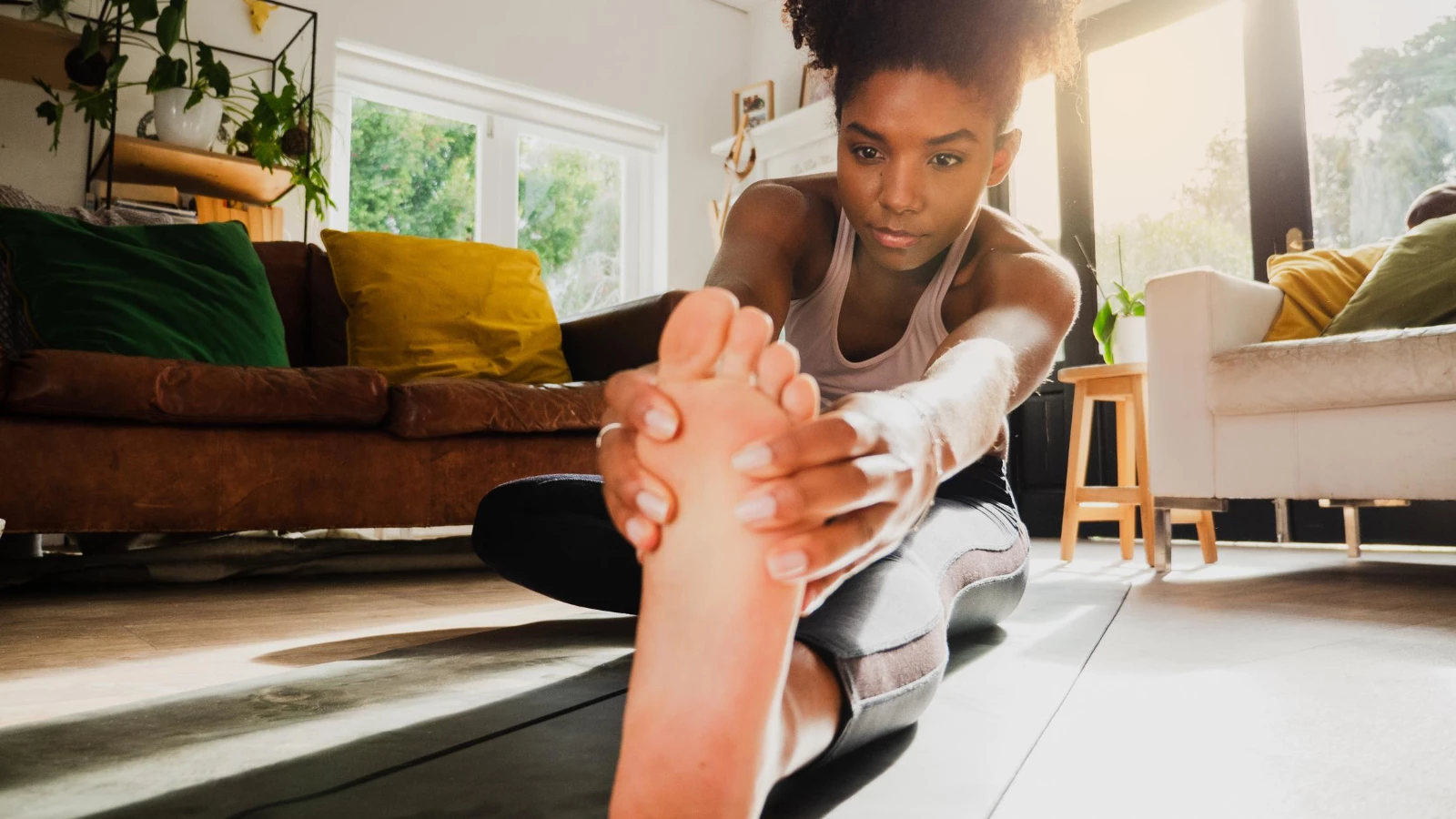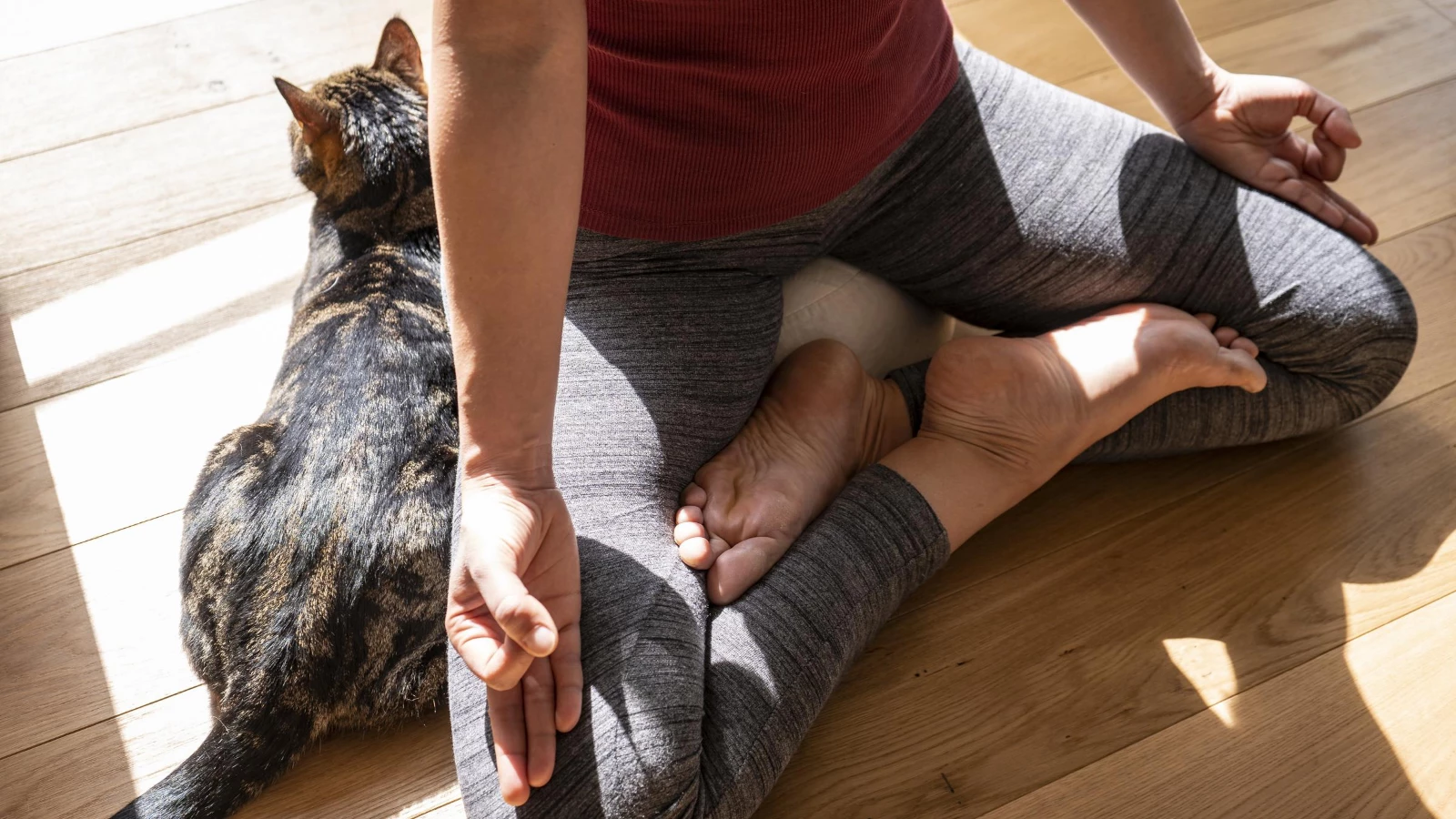Yoga Off the Mat: Using Yoga to Tackle Challenging Life Situations

You enjoy practicing yoga. Presumably, that’s part of what led you to read this article. You come out of class feeling rejuvenated and are enjoying the journey of discovery, of the practice, and yourself. However, have you noticed the practice shifting how you are in the world, in areas not overtly related to yoga? For instance, maybe you’ve seen changes in how you engage with people, how you reach toward your goals, and how you handle difficulty. In this piece, we’ll focus on that last matter, how yoga can guide us in challenging times off the mat.
A connecting thread in all of the below is how yoga can lead us to respond rather than react, in other words, bring more mindfulness, patience, and discernment to what we do in the face of difficulty. With each new instance of responding rather than reacting, we can watch our lives improve with more grace and harmony. What will you choose? The answer begins on the mat and the meditation cushion but can go far, far beyond them.
Running Late? Practice Pranayama

Running late, particularly from commuting hassles like traffic or public transit issues, can bring a unique kind of physically felt stress. Breathing quickens and gets choppier, muscles tighten, and you might even find yourself clenching your jaw. This kind of stress response is normal and natural.
In addition to not feeling good, being in this sort of tense state isn’t conducive to effective decision making. It’s rooted in fear, and fear can shut off clear thinking. Quick, effective decision making is most likely precisely what you need to handle a situation such as running late from commuting troubles. Off-the-mat yoga can be just the thing to help you to recenter.
You can’t roll out your yoga mat in a stagnant subway car or while stuck in traffic, but you can use the breath to recenter at any time. Try a breath count, making your exhalations longer than your inhalations. Try breathing in for four counts, pausing for four counts, and breathing out for six counts. Exhaling for longer than you inhale can lessen the degree of your body’s stress response. If you are straining with this breath count, that can increase the stress response (and therefore be counterproductive), so breathe for fewer counts at each step.
Try maintaining that breathing pattern for a few minutes, or for as long as you can, and then check in with how you feel. Another exercise that may bring about a similar effect is to use mantras, such as “inhale peace, exhale love” (taking in peace, putting out love). As with meditation, your mind will most likely wander. Pay that the same amount of worry that you do clouds passing by overhead (in other words, little to none). Just keep coming back to your mantra, no matter how many times you have to.
How to Use Mantras and Meditation for Anxiety

You’ve got a to-do list that feels insurmountable. You get anxious just thinking about it. Undoubtedly, most (if not all) people reading this can relate. You start to wonder what to attack first, what may be the highest priority. Yet before you can come up with any useful ideas, your mind becomes a fog.
You can begin to think more clearly and feel better with the yogic practice of aparigraha, or detachment. It doesn’t mean any longer caring about a particular condition or outcome; it simply means no longer being attached to that condition or outcome. The difference lies in the tone and tenor of the mental and emotional weight one puts on such a condition or outcome.
“The Serenity Prayer” offers another way to understand this concept. “God grant me the serenity to accept what I cannot change, the courage to change what I can, and the wisdom to know the difference.” So, with an overwhelming to-do list, aparigraha can help you to hold this frame of mind: do what you honestly can, to the absolute best of your ability, and trust that the rest will get done at a later point.
Getting to a place of detachment can feel unsettling. Fear and doubt can arise. Meditation can help to bring you back to center as such feelings arise. Here are a few suggestions:
- Use empowering mantras, such as “I am steady; I am strong; I am calm.” Repeat that for a few minutes, and then breathe normally, noticing how you feel.
- Use color meditation: When you are feeling overwhelmed, try imagining a color that calms you moving from your head to your toes, soaking into every cell of your body. Practice with your eyes closed and place yourself in a comfortable position, though avoiding lying down, as you could get so relaxed that you could fall asleep. Follow that with a color that energizes you, that color also soaking into every cell. After breathing into the imagery of every cell soaked with calm energy for as long feels comfortable to you, gently open your eyes and see if you feel readier to tackle your to-do list with more calm, equanimity, and effectiveness.
How to Practice Yoga Off the Mat When You’re in Conflict

Disagreeing with loved ones can feel terrible. Fights are so often about so much more than what they seem to be about. Both parties can anxiously wonder (secretly or openly) what it all means going forward. Anger, resentment, guilt, fear, and many other emotions can create a complex mix that can feel very difficult to pull apart and understand.
What can help here is to come back to love—to know that to love is our natural condition. That can help us all get back to our empathy, to see the situation from the other person’s viewpoint. It can help us to see that both we and the other person are most likely doing the best that we can, and perhaps we’ve made mistakes because we’re human.
This mindset can help us to clear through the muck of that complex mix of emotions, and get back to understanding—perhaps forgiveness, or perhaps simply moving on and leaving it in the past. How does yoga off the mat play here? First, as discussed, aparigraha can help us to separate from those feelings. It helps us disidentify with them (in other words, “this is just what I’m feeling, not who I am”) so that we can move beyond them. Second, seeing the situation from the other person’s viewpoint can lead us closer to understanding the truth of the situation, and connect us to the yogic value of satya or truth.
For instance, we can realize that the person might be coming from a defensive place caused by prior trauma, or that everything they’re handling—work, family, other personal matters—is overwhelming them. Coming from a place of understanding something at least closer to the truth is likely to lead to a much more peaceful, productive outcome than coming from one of seeing only one’s own perspective, which is, by definition, only half of the story. All of this considered, yoga on the mat can lead us to greater health of body and mind, and yoga off the mat can lead us to greater health of the heart and how we relate to others.
Also, read...
Teaching Svadhyaya: 3 Ways to Encourage Self-Study in Yoga
In Celebration of Gray-Haired Yoga – Busting the Myth of the Yoga Body
Related courses

Kathryn Boland is an RCYT and R-DMT (Registered Dance/Movement Therapist). She is originally from Rhode Island, attended The George Washington University (Washington, DC) for an undergraduate degree in Dance (where she first encountered yoga), and Lesley University for an MA in Clinical Mental Health Counseling, Expressive Therapies: Dance/Movement Therapy. She has taught yoga to diverse populations in varied locations. As a dancer, she has always loved to keep moving and flowing in practicing more active Vinyasa-style forms. Her interests have recently evolved to include Yin and therapeutic yoga, and aligning those forms with Laban Movement Analysis to serve the needs of various groups (such as Alzheimer’s Disease patients, children diagnosed with ADHD, PTSD-afflicted veterans – all of which are demographically expanding). She believes in finding the opportunity within every adversity, and doing all that she can to help others live with a bit more breath and flow!



